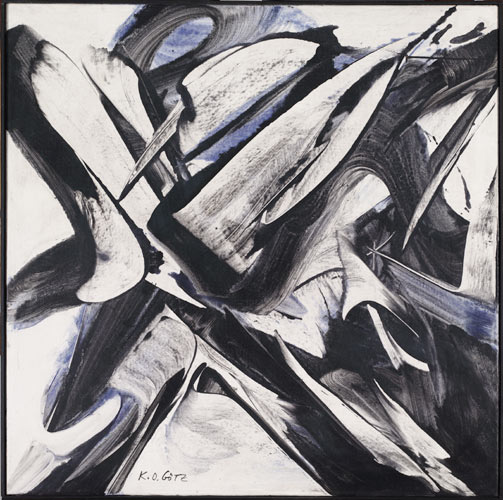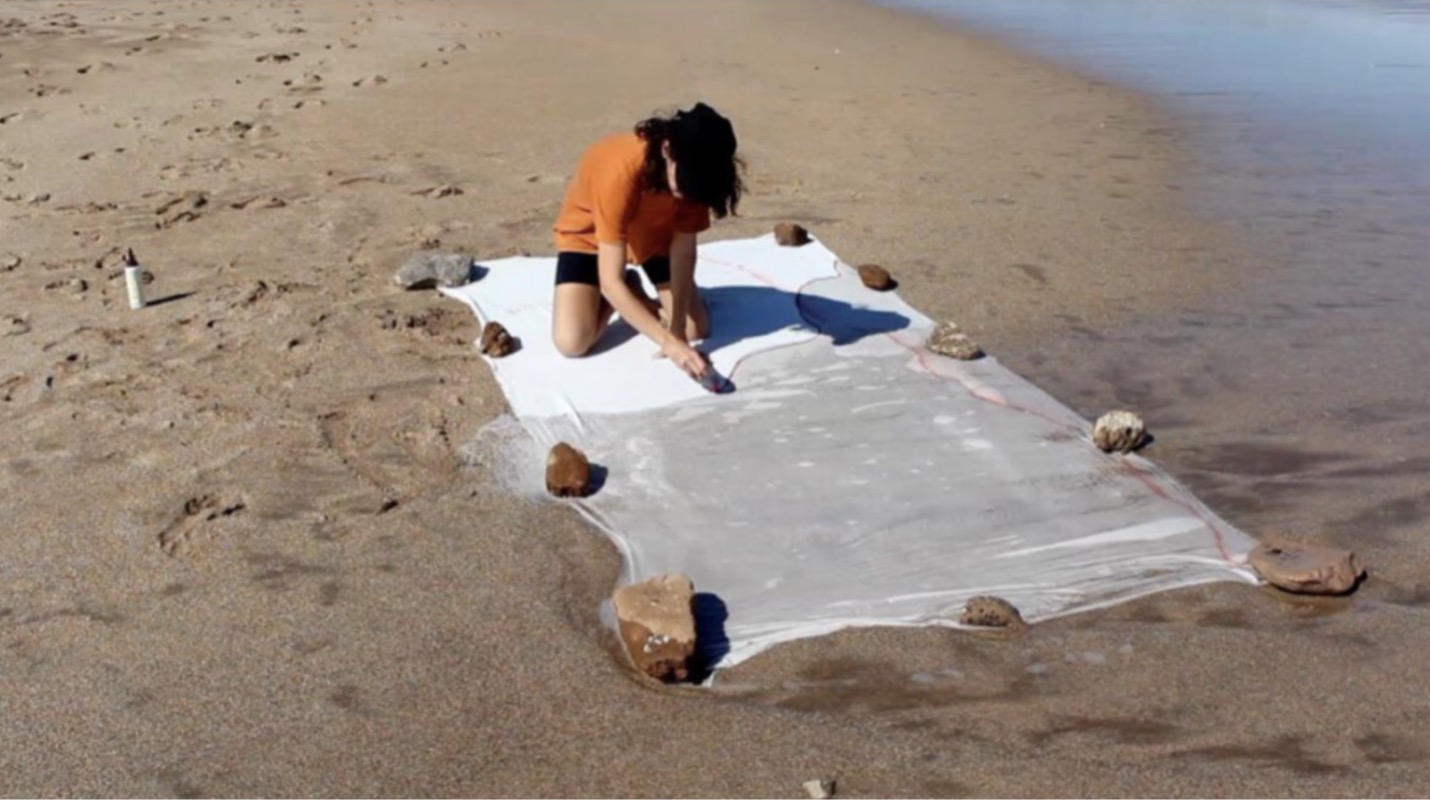Taken together, the objects on display in our inaugural installation tell the story of the world’s great art—from ancient to modern times and across all media. Index asked curators to share vignettes about a select group of objects that showcase the breadth and depth of our collections, offering you a window on what will be on view when our new facility opens to the public on November 16.
K. O. Götz, June 1954/II, 1954, German, Harvard Art Museums/Busch-Reisinger Museum.
As an artist and teacher, K. O. Götz helped define the artistic landscape in Germany after World War II and was a major proponent of abstract painting. Götz’s modestly scaled June 1954/II is an early example of the artist’s signature technique. He had recently abandoned oil paint for casein paint, applying it to a canvas primed with glue and then quickly manipulating it with a blade or hard-edged squeegee (Rakel). In this work, dynamic black, white, and blue forms create what contemporary art critic Édouard Jaguer dubbed “whipped space.” Here we see the result of a few concentrated flicks of the wrist and sweeps of the arm; as the size of Götz’s canvases grew over the years, his works required the movement of the entire body and an array of self-designed long-armed brushes and tools. This year there are several exhibitions of Götz’s work in honor of his 100th birthday.
See other highlighted objects here.



